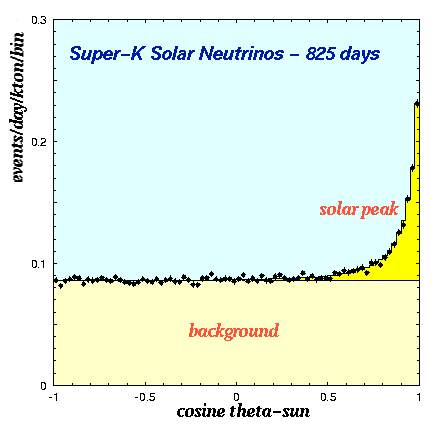
Solar neutrinos are produced by the nuclear reactions that power the Sun. The fusion of proton plus proton (pp) to deuterium plus positron plus neutrino is responsible for 98% of the energy production of the sun. Therefore these pp-neutrinos are the most plentiful, and the most reliably estimated. About 60 billion pp-neutrinos pass through a square centimeter at the Earth each second. They are relatively low energy, however, with a continuous spectrum that ends at 420 keV. In addition, there are several rarer reactions which also produce neutrinos. The electron capture on Beryllium-7 produces a sharp line of Beryllium-7 neutrinos at 861 keV. A small fraction of the time, Beryllium-7 captures a proton instead of an electron, to form Boron-8. The beta decay of Boron-8:
8B -> 8Be + e+ + nu_e
produces a continuous spectrum of neutrino energies that extends to 15
MeV. Super-K is sensitive to these
rare but high energy Boron-8 neutrinos.

- John Bahcall's Solar Neutrino Pages
- Implications of Solar Neutrino Experiments by N.Hata and P.Langacker.
- The Sudbury Neutrino Observatory (SNO) Experiment
- The Borexino Experiment at Gran Sasso